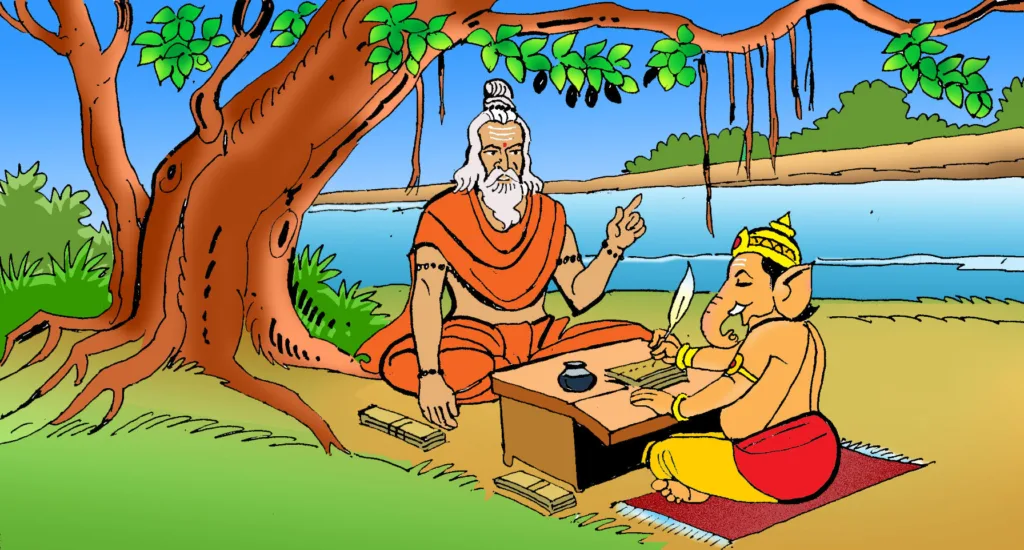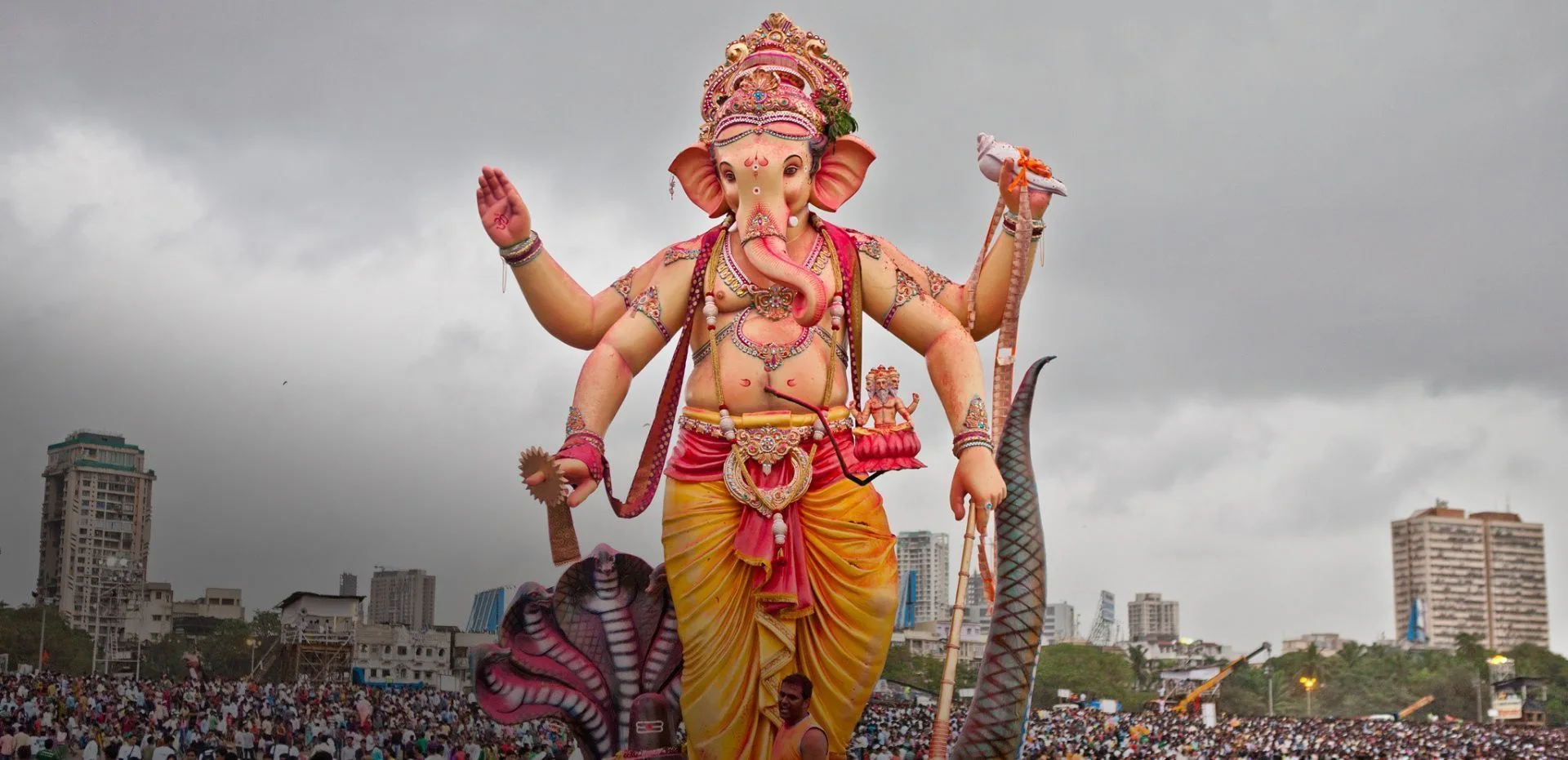Knowing Ganesh Chaturthi History and the Ganesha Story is crucial to appreciating the significance of Ganpati Festival today.
Every year, as the vibrant hues of August and September fill the air, a divine presence is felt across the land. It is the time when Lord Ganesha descends from the heavens to bless his devotees, and Ganesh Chaturthi becomes more than a festival; it becomes a celebration of life, wisdom, and the eternal bond between the creator and his creation.
Ganesh Chaturthi History: Where Tradition Meets Devotion
The roots of Ganesh Chaturthi History stretch back to ancient India, where the festival was traditionally a household celebration to honor Lord Ganesha. However, it wasn’t until the 17th century, under the Maratha ruler Chhatrapati Shivaji Maharaj, that the festival gained prominence as a public event. Shivaji promoted the festival to inspire unity and nationalism among his people. It became a way to rally the community, and it helped cement Ganesha’s position as a beloved deity across various regions in India.
The celebration saw a decline during the British colonial period when public gatherings were discouraged. However, in the late 19th century, the Indian freedom fighter Lokmanya Bal Gangadhar Tilak revived Ganesh Chaturthi, transforming it into a large-scale public festival. He envisioned it as a means to unite Indians against colonial rule, turning it into a social and political movement. Public celebrations of Ganesh Chaturthi became a symbol of resistance, drawing people from diverse backgrounds together. Tilak’s vision helped fuel the rise of Ganesh Chaturthi as we know it today—a festival of both spiritual and cultural significance.
The Symbolic Story of Ganesha’s Birth (The Divine Ganesha Story)

The Ganesha story is a powerful narrative of creation, destruction, and rebirth, filled with symbolic meanings that resonate deeply in Hinduism. According to the myth, Ganesha was created by Goddess Parvati from the turmeric paste she used for bathing. She breathed life into the figure, making him her son. Parvati tasked Ganesha with guarding her chambers while she bathed.
Meanwhile, Lord Shiva, Parvati’s husband, returned home, unaware of Ganesha’s existence. When Ganesha, loyally following his mother’s orders, refused to allow Shiva to enter, a battle ensued. In his fury, Shiva beheaded Ganesha. Upon realizing his mistake and seeing Parvati’s devastation, Shiva promised to restore Ganesha to life. He sent his attendants to find the head of the first creature they encountered, which happened to be an elephant. Thus, Ganesha was reborn with the head of an elephant, symbolizing wisdom, strength, and intelligence. Shiva declared Ganesha to be the leader of all divine beings and granted him dominion over all living creatures.
This Ganesha Story is more than a myth; it carries deep spiritual meaning. Parvati, a manifestation of the cosmic energy (Shakti), represents the Earth or material existence. Ganesha, created from her, represents the soul’s journey through the physical world. The beheading of Ganesha signifies the destruction of the ego, and his resurrection with the elephant’s head symbolizes the transformation of personal identity into a higher, universal consciousness. In this way, the Ganesha Story teaches the importance of humility, wisdom, and surrender to divine will.
Rituals and Celebration of Ganesh Chaturthi
The celebration of Ganesh Chaturthi History reflects its evolution from private rituals to grand public events. The festival begins on the fourth day of Bhadrapada, according to the Hindu lunar calendar, which usually falls in August or September. It lasts for ten days, culminating in the immersion of Ganesha’s idol in water, a ceremony known as Visarjan.
During these days, beautifully crafted idols of Lord Ganesha are installed in homes and public spaces. The rituals start with Pranapratishtha, a sacred ceremony where life is symbolically infused into the idol. Devotees offer prayers, perform aartis, and chant Vedic hymns to seek the blessings of Lord Ganesha. Offerings include sweets like modaks, Ganesha’s favorite food, symbolizing the sweetness of knowledge and wisdom.
The significance of the immersion ritual lies in its representation of the cycle of creation, preservation, and dissolution. The clay idol, after being worshipped, is immersed in water, symbolizing the return of Ganesha to his celestial abode. It reminds devotees of the impermanence of life and the need to detach from worldly possessions and desires.
Ganesha’s Symbolism and Cultural Importance
Lord Ganesha holds immense cultural and spiritual significance in Hinduism. He is revered as the remover of obstacles, and his blessings are invoked before starting any new venture. His elephant head symbolizes wisdom, understanding, and a discerning intellect, while his large ears encourage listening more and speaking less. The small mouse, his vehicle, signifies humility and the ability to navigate through life’s challenges.
Ganesh Chaturthi also symbolizes unity, as people from various communities come together to celebrate. The public processions, devotional songs, and performances create a sense of shared cultural identity and promote social harmony. This aspect of Ganesh Chaturthi History is rooted in its role as a unifying force, first used by Tilak to inspire nationalist sentiment and now embraced as a festival of joy, community, and faith.
Modern Environmental Concerns
In recent years, environmental consciousness has also become a part of Ganesh Chaturthi celebrations. Traditionally, idols made from non-biodegradable materials have caused pollution when immersed in water bodies. However, there is now a growing movement toward using eco-friendly Ganesha idols made from clay or natural materials. This shift not only preserves the environment but also aligns with Ganesha’s teachings of harmony with nature and respect for all living beings.
As Ganesh Chaturthi continues to evolve, the festival remains a time to reflect on the timeless values of wisdom, humility, and devotion that Ganesha embodies. The story of Ganesha’s creation and the rituals of his festival serve as a reminder of the eternal truths of life and the pursuit of spiritual growth.
By understanding the rich tapestry of Ganesh Chaturthi History and the Ganesha Story, we connect more deeply with the essence of the festival. It is not merely a celebration of a deity but a profound acknowledgment of the soul’s journey toward wisdom, unity, and divine love.

